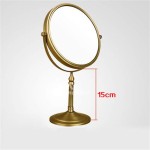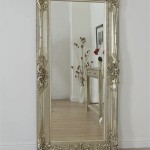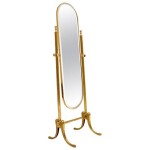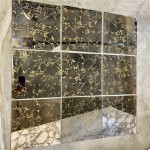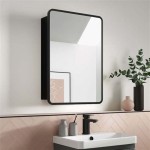Can I Paint a Mirror Black?
Painting a mirror black is achievable, though it requires careful preparation and the correct materials to ensure a smooth, even finish. Simply applying paint directly to a mirror surface often yields unsatisfactory results due to the inherent slipperiness and reflective qualities of the glass. This article will explore the process of effectively painting a mirror black, covering the necessary steps and considerations for a successful outcome.
Surface Preparation
Proper surface preparation is crucial for paint adhesion. The smooth surface of a mirror doesn't readily bond with paint. Cleaning the mirror thoroughly with glass cleaner removes dust, fingerprints, and other residues that can interfere with paint adhesion. After cleaning, lightly sanding the mirror surface with fine-grit sandpaper creates microscopic scratches that provide a slightly textured surface for the paint to grip. This step is essential for promoting proper bonding and preventing the paint from peeling or chipping later.
Priming the Mirror
Applying a specialized primer designed for glass and glossy surfaces is highly recommended. This type of primer enhances the adherence of the paint to the smooth mirror surface. An even coat of primer should be applied, allowing it to dry completely according to the manufacturer's instructions before proceeding to the next step. Choosing a high-quality primer specifically formulated for non-porous surfaces is key to a durable and long-lasting finish.
Choosing the Right Paint
Selecting the appropriate type of paint is critical for achieving the desired black finish. Several options are available, including enamel paints, acrylic paints, and specialized glass paints. Enamel paints offer a durable, glossy finish that is well-suited for mirrors. Acrylic paints are versatile and provide a range of finishes, from matte to gloss. Specialized glass paints are formulated to adhere to glass surfaces without the need for extensive surface preparation. Consider the desired finish and the level of durability required when selecting the paint.
Application Techniques
Applying the paint in thin, even coats is essential for preventing drips and ensuring a smooth finish. Multiple thin coats are generally preferable to a single thick coat, as thinner coats dry more evenly and are less prone to cracking. Allow each coat to dry completely before applying the next. Using a high-quality brush or a spray paint specifically designed for use on glass can help achieve a professional-looking result. Using a foam roller is not recommended due to the potential for creating air bubbles and an uneven texture.
Drying and Curing Time
Allowing ample drying and curing time is vital for the paint to fully harden and achieve its maximum durability. The drying time varies depending on the type of paint used and the environmental conditions. Refer to the manufacturer's instructions for the recommended drying and curing times. Avoid touching or handling the painted surface during this period to prevent smudging or damaging the finish. A dust-free environment during the drying process is also recommended for optimal results.
Sealing the Painted Surface (Optional)
For added protection and durability, consider applying a sealant over the dried paint. A clear sealant designed for use on painted surfaces can provide a protective barrier against moisture, scratches, and other potential damage. Applying the sealant in thin, even coats, following the manufacturer's instructions, will ensure a uniform finish and maximize protection. This step is particularly beneficial for mirrors that may be exposed to high humidity or frequent handling.
Safety Precautions
When painting a mirror, it is essential to work in a well-ventilated area to avoid inhaling paint fumes. Wearing a respirator or mask is recommended, especially when using spray paint. Protecting surrounding surfaces with drop cloths or masking tape can prevent accidental overspray. Proper disposal of paint and other materials should be carried out according to local regulations.
Alternative Methods
While painting is a common method for achieving a black mirror effect, alternative methods exist. Specialized mirror films or tints designed to create a black mirrored surface can be applied. These films are often easier to apply than paint and can be removed if desired. Another alternative involves using a black backing paint specifically designed for mirrors, which is applied to the back of the mirror. This method preserves the reflective front surface while creating a black appearance from certain angles.

Spray Painted Gold Yard Mirror How To Paint A Frame

Make A Black Mirror 4 Steps Instructables

Spray Painted Gold Yard Mirror How To Paint A Frame

You Can Get Stacey Solomon S Panel Mirror For Even Er With This Black Paint The Sun

12 Techniques To Painting Antique Mirrors Hallstrom Home

Spray Painted Gold Yard Mirror How To Paint A Frame

A Variety Of Mirrors Refinished With Chalk Paint Black Furniture Painting Mirror Frames

Paint A Mirror Or Three Confessions Of Serial Do It Yourselfer

How To Spray Paint A Mirror Frame Painting Frames Diy

How To Paint A Mirror Finding Silver Pennies

